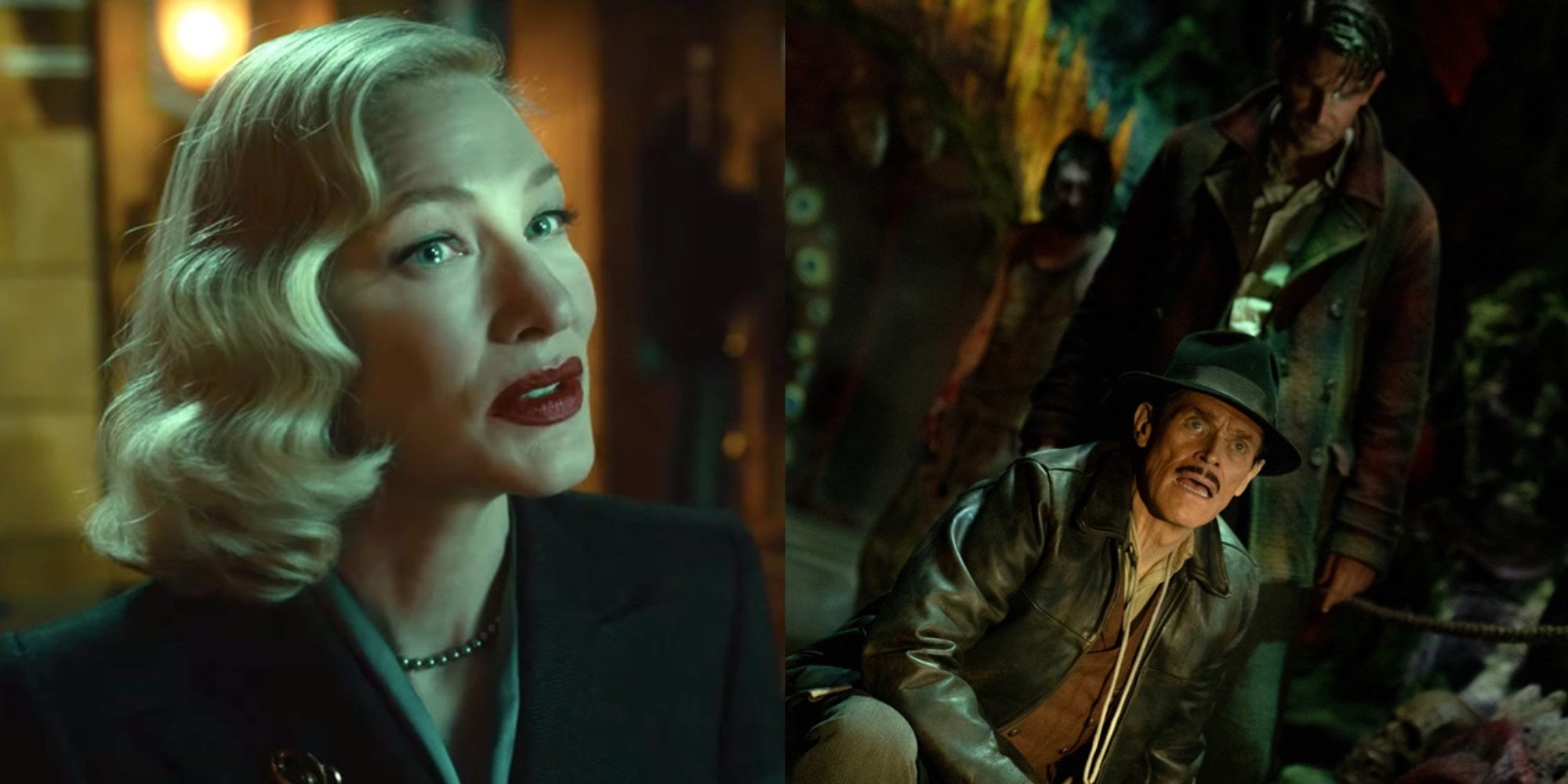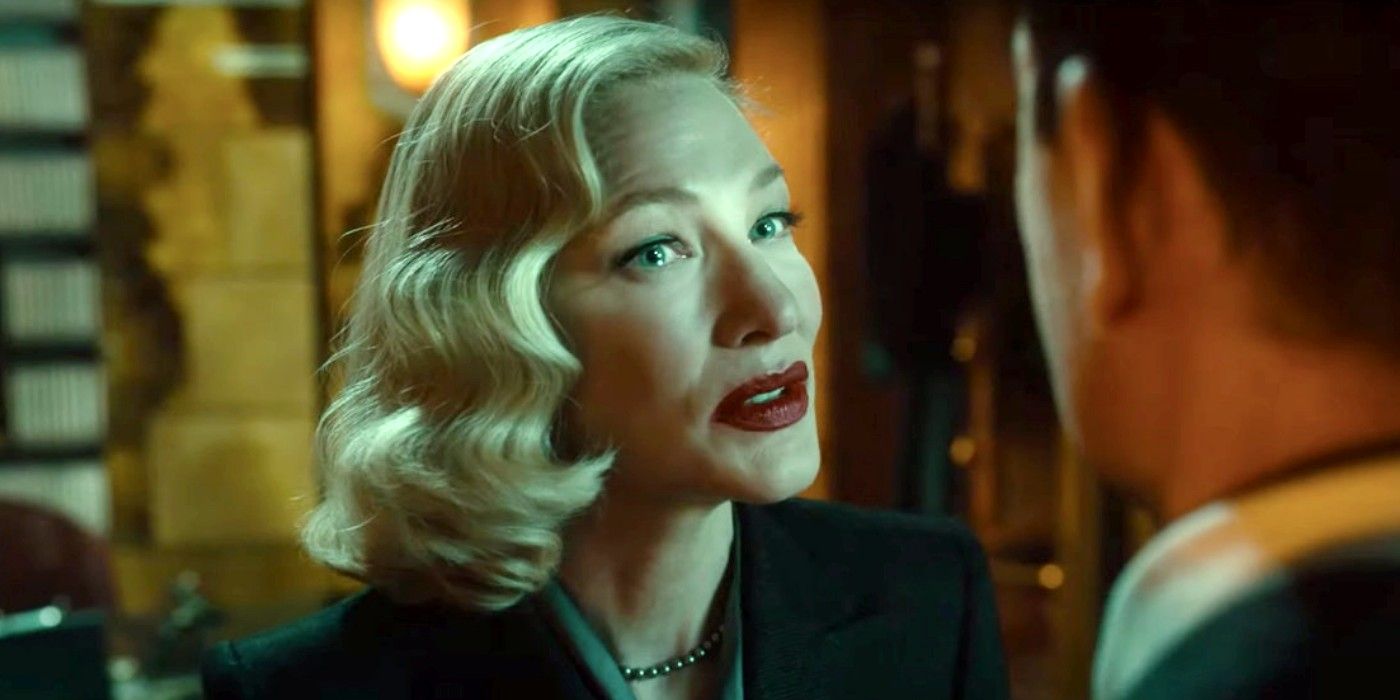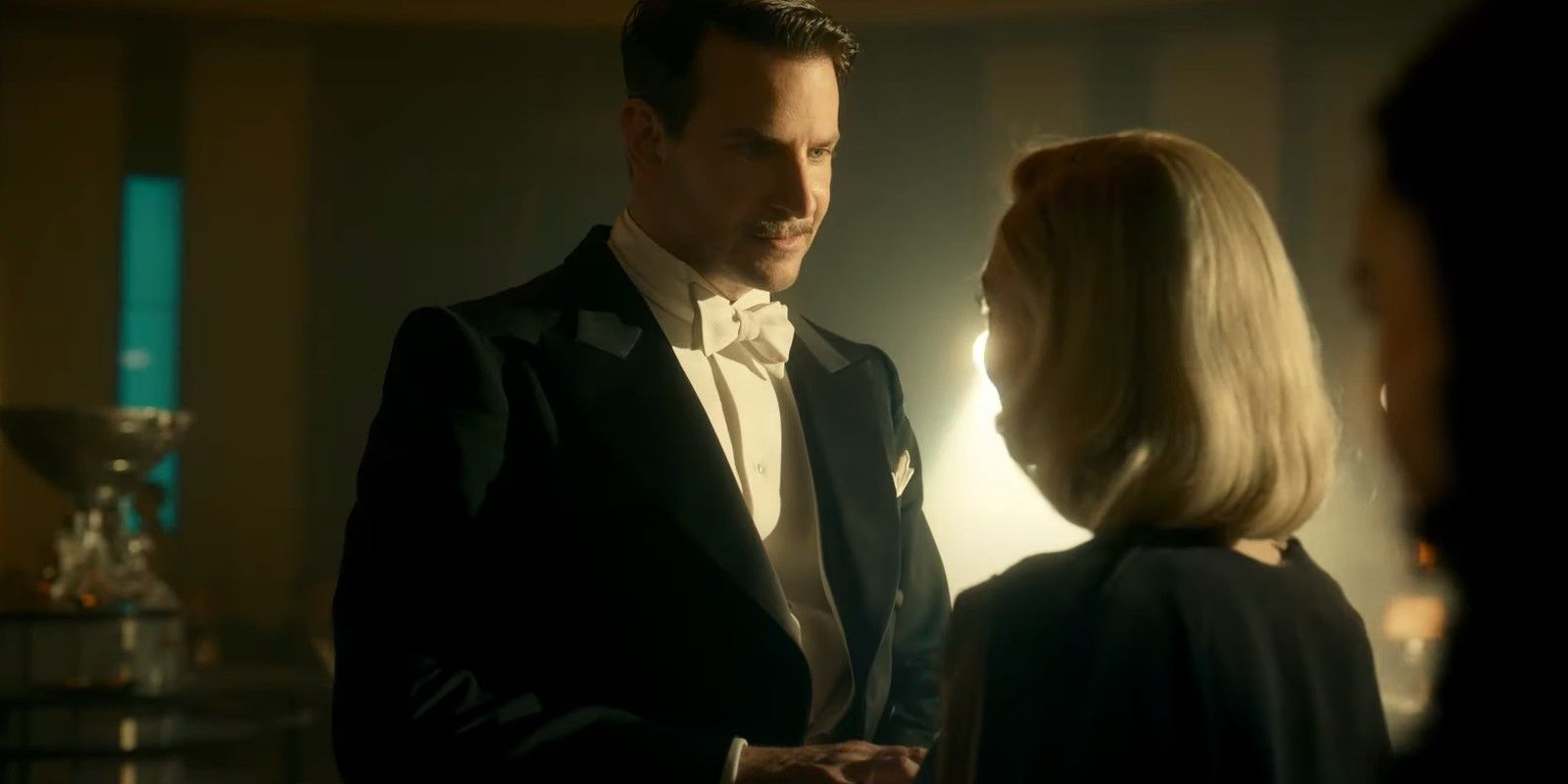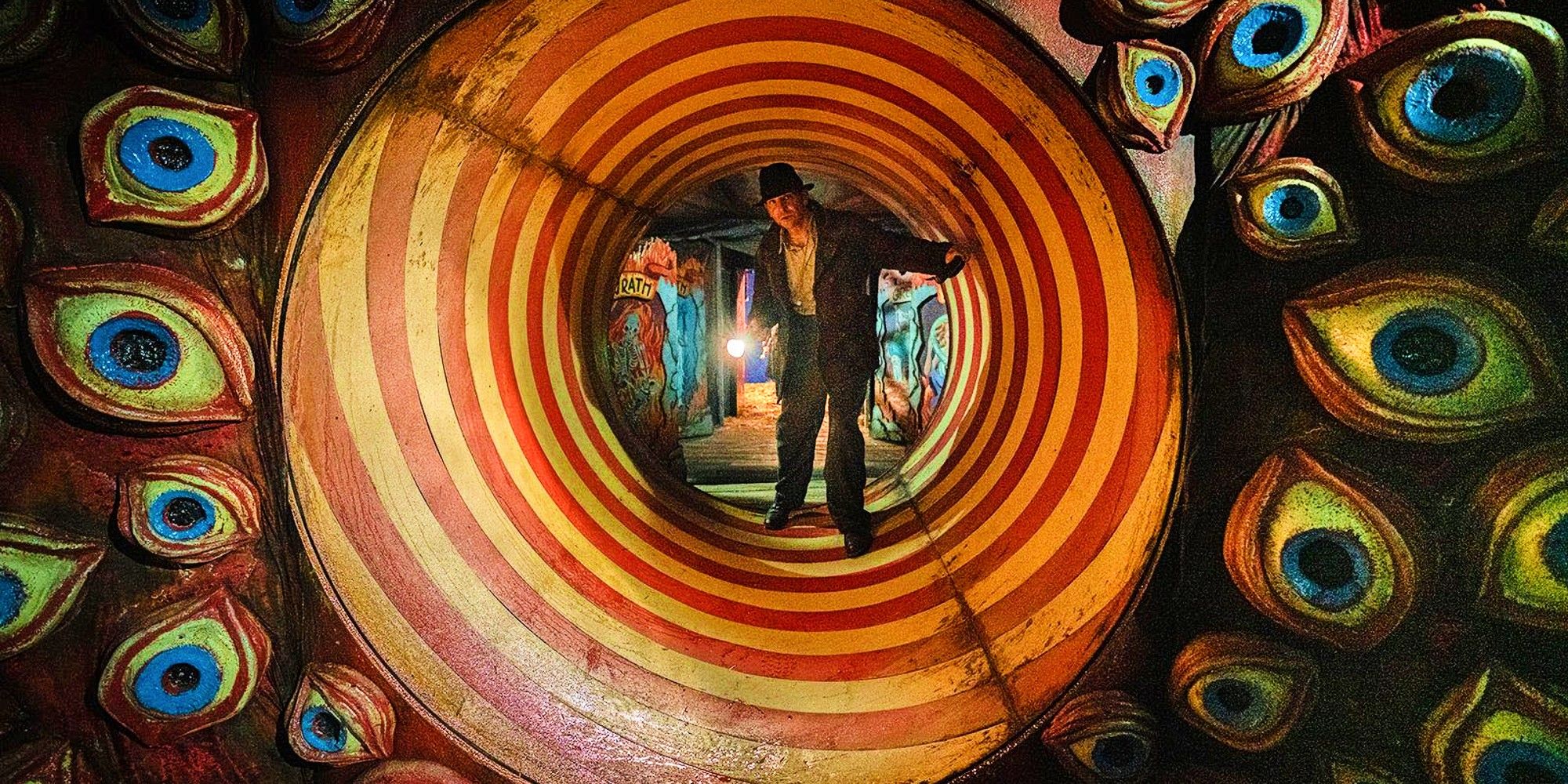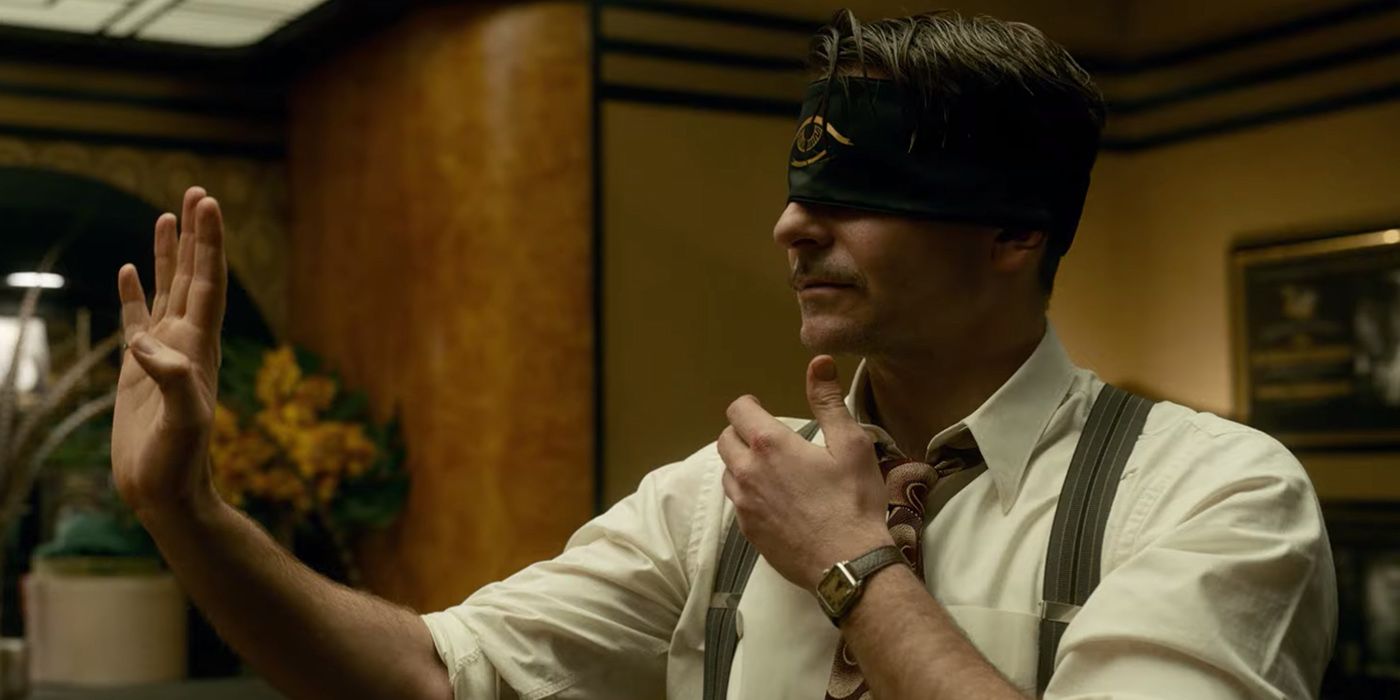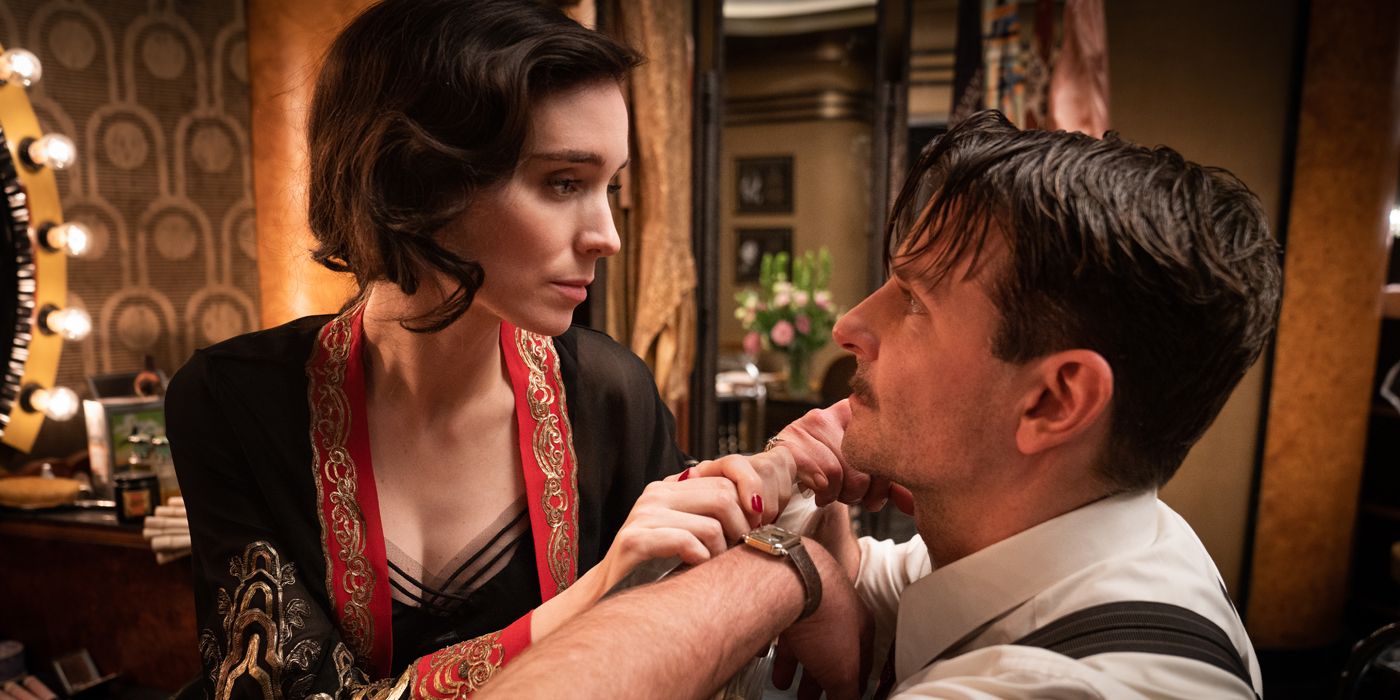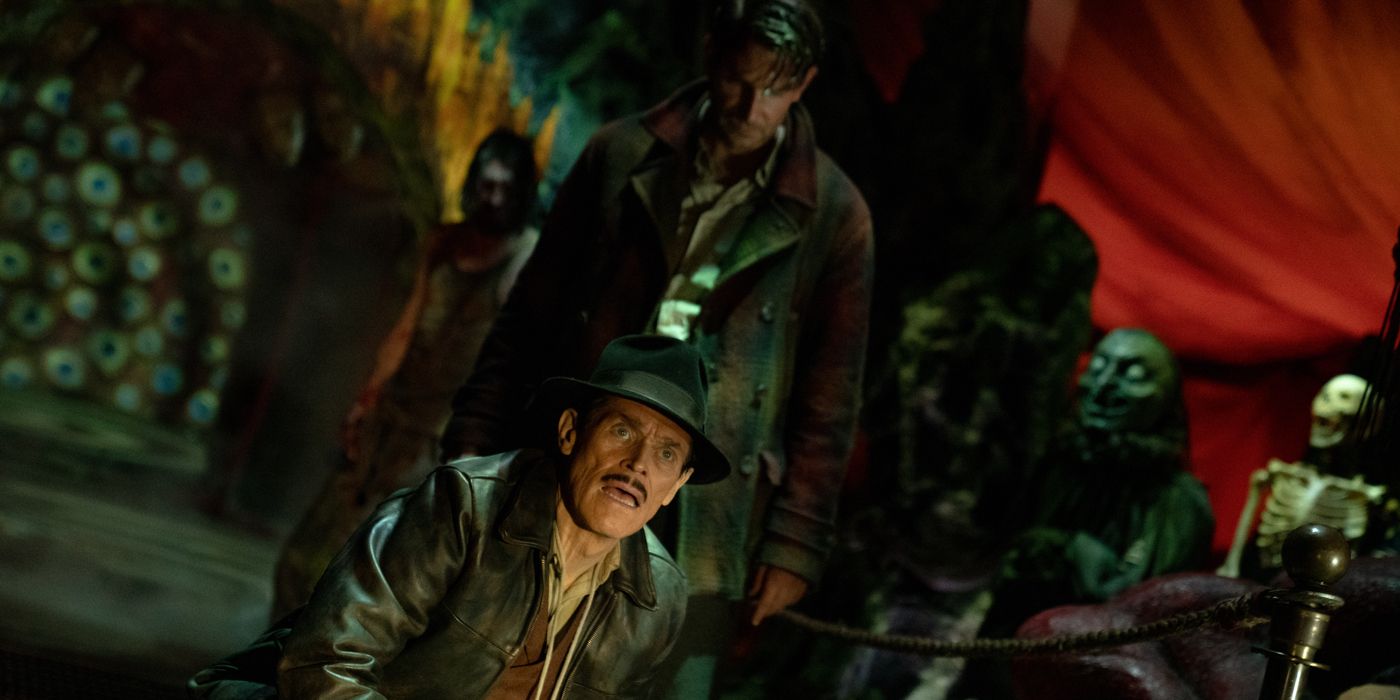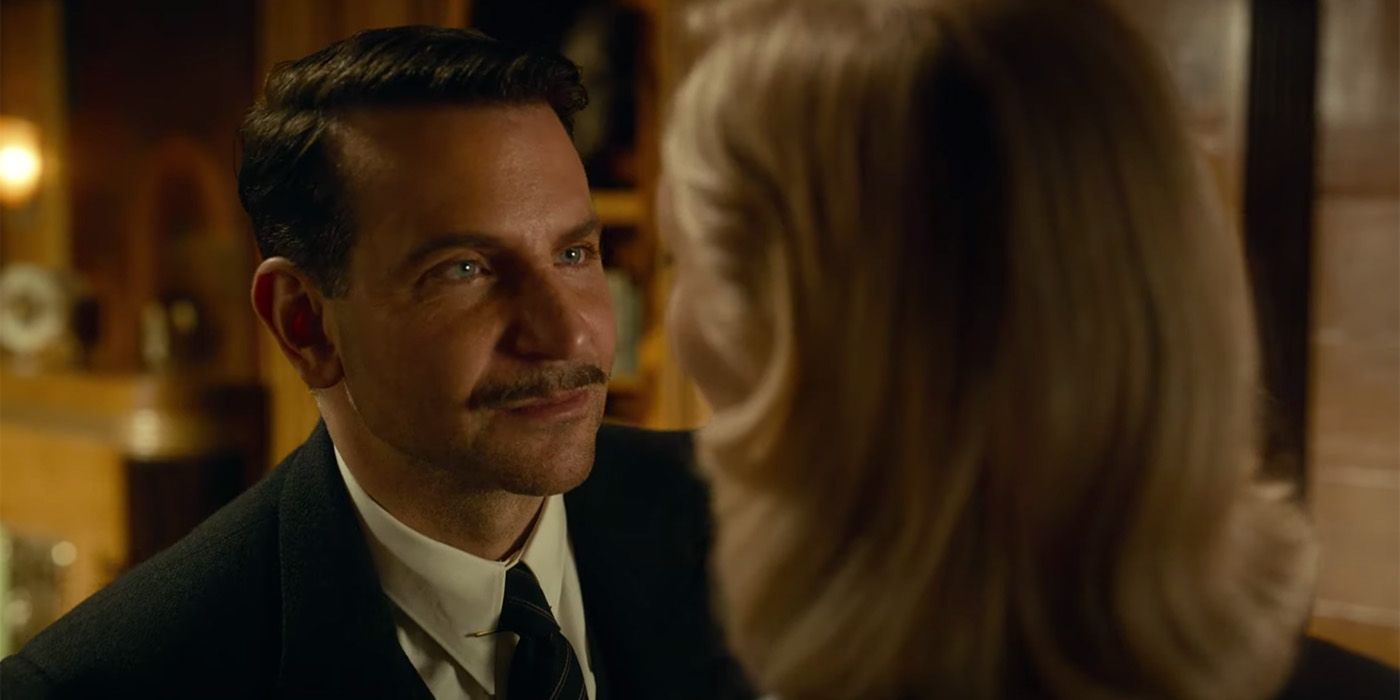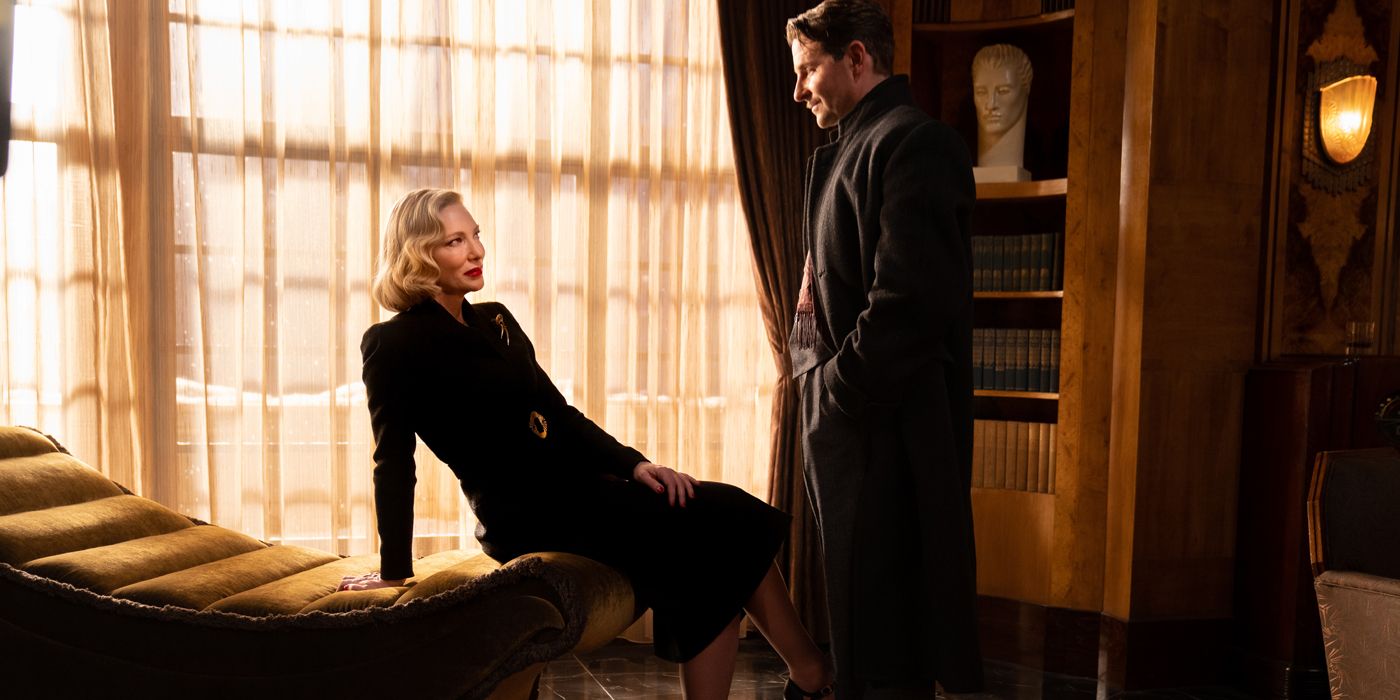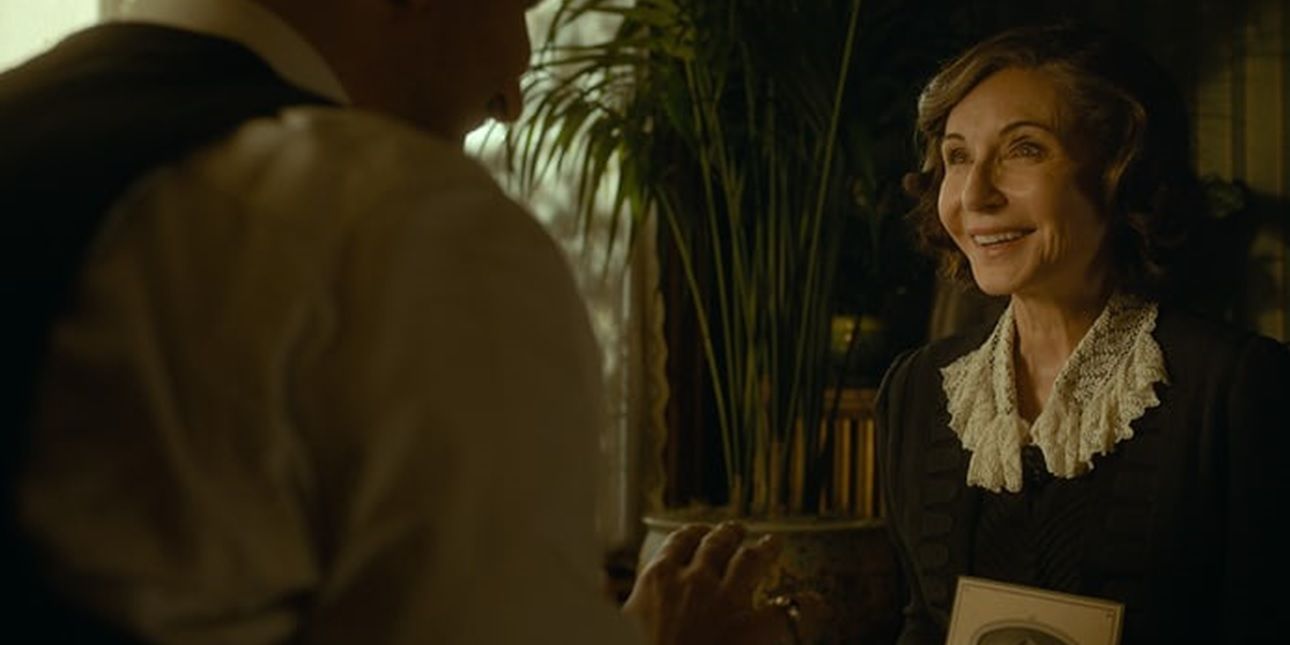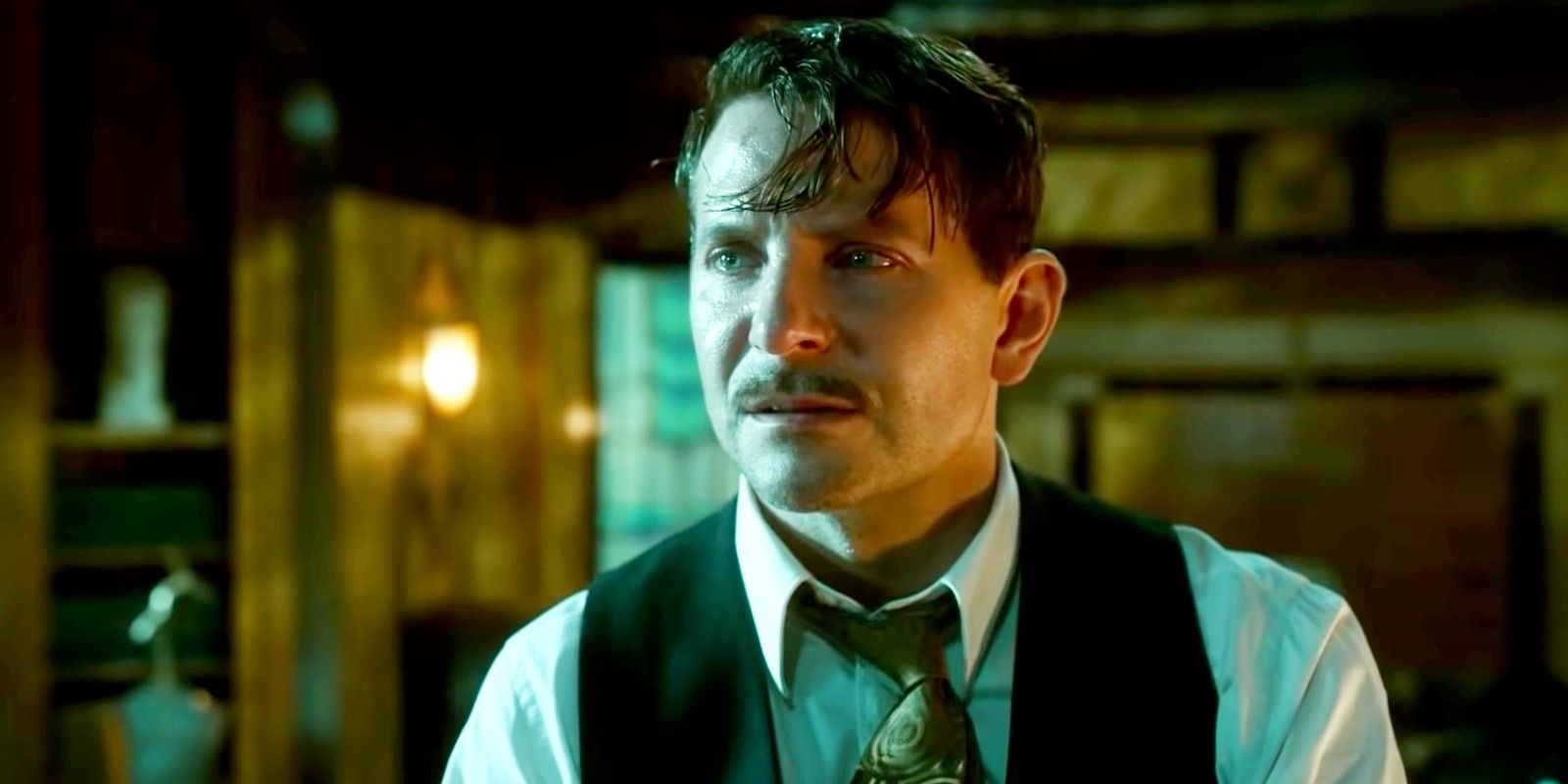The nominations for this year’s Academy Awards were recently announced, and Guillermo del Toro’s latest opus Nightmare Alley walked home with four impressive nods: Best Picture, Best Cinematography, Best Production Design, and Best Costume Design. Praised by critics, Nightmare Alley has been called a tonal departure for del Toro.
Its story has no supernatural elements and it’s set up as a classic film noir. But it’s still a quintessential del Toro horror movie with plenty of the genre’s tropes – it could be best described as a “horror noir.”
Classic Noir
Femme Fatale
Cate Blanchett was snubbed for Best Actress for her pitch-perfect portrayal of the “femme fatale” archetype, a staple of the film noir, in Nightmare Alley. Dr. Lilith Ritter is a psychiatrist who sells out her patients’ deepest, darkest secrets to earn a quick buck from a con man.
When Stan swings by her office to drop off some cash, she gives him an impromptu therapy session that unleashes his own inner demons. Like all great femme fatales, Lilith double-crosses the antihero – she cons the con artist.
High-Contrast Lighting
Although del Toro shot Nightmare Alley in color – with a carefully chosen gloomy color palette – he lit it like a black-and-white movie, with a lot of shadows and backlighting.
The aesthetic of Nightmare Alley was so black-and-white-friendly that it was re-released in black-and-white under the title Nightmare Alley: Vision in Darkness and Light.
Dark Backstory
The protagonists of film noirs are often haunted by their past, and Nightmare Alley’s Stan Carlisle is a prime example. In the opening scene, he burns a corpse, then spends the rest of the movie trying to escape the painful memory of what he did.
When he starts working a new con with Lilith and she gets him on the therapy couch, she starts to peel back the layers. She reveals some of the childhood traumas that Stan has to live with.
Cons
The central tragedy in Nightmare Alley is that Stan is a con artist who gets conned when he meets an even more duplicitous and untrustworthy con artist than himself.
Complex cons are key to the film noir. These film noir cons are usually heists or blackmail plots, but a phony mystic show fits the bill just as well.
The Moral Downfall Of An Antihero
Film noirs often follow complicated plots, but the external conflicts of the plot aren’t what really matters. Classic noirs are character studies of their central antihero, taking them on a dark journey in which they cause their own moral downfall. Nightmare Alley’s Stan Carlisle is a perfect example of an antihero who causes his own downfall.
He’s a drifter running from a dark past in the first half and a self-made man whose wealth comes from scamming people in the second half. These cons lead to dire consequences like a murder-suicide after a misinterpreted mystic reading. Stan meets an inevitably tragic fate as another carnival takes him on as the star attraction of a “geek show.”
Horror Movie
Disturbing Imagery
From the beginning of his filmmaking career, del Toro’s movies have been riddled with disturbing imagery, like floating ghosts with blood streaming out of their eyes. Nightmare Alley has a ton of traditionally unnerving del Toro images.
It opens with a corpse being set on fire; a few minutes after that, a man eats a chicken alive for entertainment. The carnival is filled with giant, grotesque eyes staring at Stan; Molly covers herself in fake blood to portray one of Ezra’s many victims – and don’t forget about Willem Dafoe’s room full of pickled babies in jars.
The Inherent Human Monster
Nightmare Alley has a monster just like del Toro’s other movies, but the monster isn’t a supernatural being like an orphaned demon or an underground creature whose eyeballs are in his hands. The film explores the inherent monster within each human being.
Everybody has the capacity for good and the capacity for bad. They’re faced with a path and either end up as a good person like Molly or a bad person like Stan. Monstrous human beings like Jack Torrance and Leatherface and Stan Carlisle are always infinitely more terrifying than paranormal threats like Freddy Krueger and Jason Voorhees.
The Villain Gets Away With It
From Michael Myers to the Thing, the villains of horror films tend to prosper. Stan avoids villain classification because there’s a villain who’s even more duplicitous and morally bankrupt than he is: Lilith.
Lilith pretends to be uneasy about taking the cash from her cons with Stan so he’ll leave the money with her, allowing her to double-cross him. Not only does she take the money; she manages to pin all their collaborative crimes on Stan alone.
Jump Scares
Jump scares can be a lazy way for horror filmmakers to frighten audiences, but del Toro uses them to fantastic effect in Nightmare Alley. The “geek” desperately tries to break out of his cage. Mary Steenburgen shoots her husband and then turns the gun on herself.
In the haunting final scene, the word “temporary” provides as big a fright as any of the pickled babies (thanks to the staying power of Dafoe’s unsettling monologue delivery about how he “breaks” the geeks).
Bleak Ending
Most horror movies end on a bleak note. Ben is mistaken for a zombie and shot dead at the end of Night of the Living Dead. Rosemary’s suspicions are confirmed to be true and the Antichrist is brought to Earth at the end of Rosemary’s Baby. Nightmare Alley has a decidedly horrifying ending in store for its antihero Stan Carlisle.
Dafoe’s harrowing monologue about his method of breaking the “geeks” is paid off when Tim Blake Nelson’s carny boss offers Stan a drink and a temporary position at the carnival. Like many del Toro endings, there’s a bittersweet quality to Stan accepting his grim fate: “Mister... I was born for it.”

